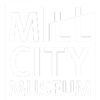
activities
What to See and Do
museum
Museum
exhibits
Special Exhibits
sponsorship-options
Tours
youth
Youth Programs
virtual-tour
Virtual Tour
mill-city
Field Trips
sponsorship-options
Mill City Farmers Market
sponsorship-options
Events Calendar
visit
Plan Your Visit
hours
Hours and Admission
directions
Directions and Parking
amenities
Amenities
shop
Shop
dining
Dining
accessibility
Accessibility
photography
Photography Policy
area-attractions
Area Attractions
groups
Group Tickets
learn
Learn
history
History
timeline
Timeline
building
Building History
flour-milling
Minneapolis Flour Milling Boom
minneapolis-riverfront
Minneapolis Riverfront
architecture-and-art
Architecture and Art
preservation
Preservation

Learn
Mill City Museum was built within the ruins of the Washburn A Mill, the flagship mill of the Washburn-Crosby Co. (later General Mills). It was the largest and most technologically advanced flour mill in the world when it was completed in 1880.
Millers at the Washburn mills in the 1870s perfected a new process for milling, a revolution that made fine wheat flour available to the masses for the first time. Soon thereafter Minneapolis became the flour milling capital of the world, a title it held from 1880 to 1930.
The Washburn A Mill Complex is a National Historic Landmark. The Minnesota Historical Society opened Mill City Museum in 2003.



